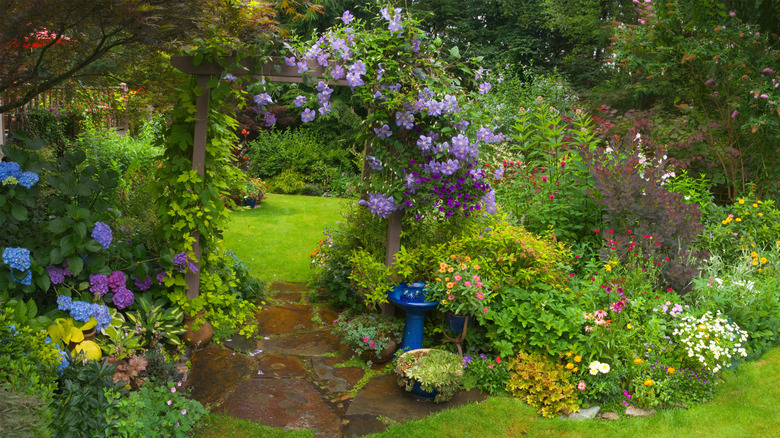The Color-Changing Dwarf Hydrangea That'll Make Your Garden Standout
What's not to love about hydrangeas? Their large, cheerful flowers can instantly add color and life to landscapes, and they even attract butterflies. If hydrangeas have a downside, it's that many cultivars can reach sizes of 25 feet tall and wide, limiting where you can use them in landscapes. Fortunately, dwarf cultivars like 'Little Lime' (Hydrangea paniculata 'Jane') are available to provide you with the same beauty, just in a smaller package.
With an average height and width of only about 5 feet, 'Little Lime' hydrangeas are perfect for smaller yards or for filling in gaps in your landscape. They also offer the same color changing panicle blooms as larger hydrangeas like 'Limelight', and their flowers shift from green to cream to pink, then to brown as summer fades into fall. It's important to keep in mind that unlike with their relatives the bigleaf hydrangeas (Hydrangea macrophylla), which you can change the color of by changing the soil pH, panicle hydrangeas like 'Little Lime' do not change color based on how acidic their soil is. Instead, their flowers simply evolve as they age.
Caring for 'Little Lime' hydrangeas
Hardy in zones 3 through 9, 'Little Lime' hydrangeas thrive in everything from full sun to part shade. They require well draining and moist soil to grow their best, but are somewhat more drought-tolerant than bigleaf hydrangeas. You also don't need to worry too much about when to prune them, as they, unlike some hydrangeas, bloom on new wood. Many people opt to keep the blooms on the plant through winter for additional winter interest, then prune the hydrangeas in early spring.
'Little Lime' hydrangeas, like many plants in this family, are vulnerable to being nibbled by hungry animals. There are a few hacks and tricks that may keep deer from eating your hydrangeas though. Another thing to keep in mind when growing 'Little Lime' hydrangeas is that they have quite shallow roots, so mulching them well can help protect them from damaging temperature and moisture fluctuations.

